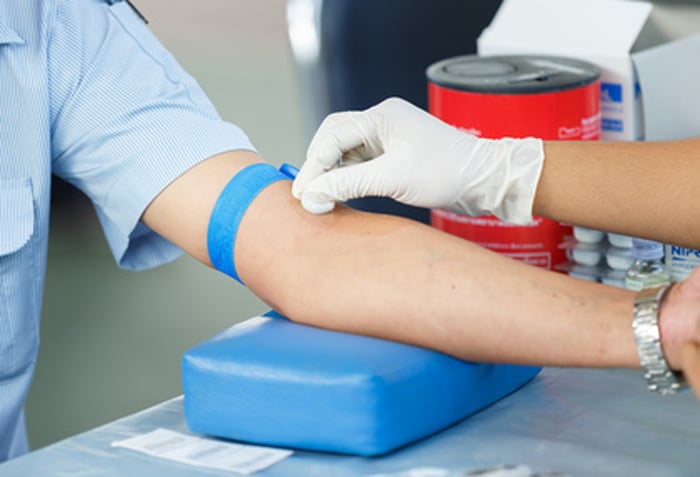Mastering the Phlebotomy Process: A comprehensive Guide to Safe and Efficient Blood Collection
Phlebotomy is an essential skill in the healthcare field, facilitating blood collection for diagnostic testing and treatment. Mastering this process not only ensures accurate results but also prioritizes patient safety and comfort. In this comprehensive guide, we’ll explore the phlebotomy process, its importance, techniques, benefits, and practical tips to execute blood collection effectively.
Understanding Phlebotomy
Phlebotomy refers to the act of drawing blood from patients for various medical purposes. This procedure is crucial for laboratory testing, blood donations, and transfusions. Mastering the phlebotomy process enhances the efficiency of healthcare providers and fosters better patient experiences.
The importance of Phlebotomy
Practicing effective phlebotomy is critical for several reasons:
- Accurate Diagnostics: Blood tests yield valuable information about a patient’s health,guiding treatment decisions.
- Patient Safety: Proper techniques reduce the risk of complications such as infections or hematoma.
- Comfort and Trust: Efficient blood draws create a positive experience, enhancing patient trust in healthcare providers.
The Phlebotomy Process: Step-by-Step
1. Preparation
Preparation is key to a accomplished blood collection process. Ensure you have:
- Proper identification and requisition forms
- All necessary supplies including gloves, blood collection tubes, tourniquet, alcohol swabs, and bandages
- A clean and well-organized workspace
2. Patient Interaction
- Identify the Patient: Confirm the patient’s identity using their full name, date of birth, or another identifier.
- Explain the Procedure: Inform the patient about the process and what to expect; this helps alleviate anxiety.
- Obtain Consent: Ensure the patient gives informed consent before proceeding with the blood draw.
3. Blood Collection Technique
Follow these steps during the blood draw:
- Select the Venipuncture Site: the antecubital fossa is typically preferred due to its accessibility.
- Apply the tourniquet: This helps engorge the veins and facilitate easier access.
- Clean the Site: Use an alcohol swab to disinfect the area and allow it to dry.
- Insert the Needle: With a swift, confident motion, insert the needle at a 15- to 30-degree angle.
- Fill the Collection Tubes: Use the correct order of draw to avoid contamination.
- Remove the Needle: Once the required sample is collected, step back and apply a cotton ball or gauze.
4. Post-Procedure Care
After completing the blood collection:
- Remove the tourniquet.
- Apply pressure to the site with gauze, then secure it with tape or a bandage.
- Dispose of the needle and other sharps in a designated sharps container.
- Document the collection details accurately.
Benefits of Mastering Phlebotomy
Effective phlebotomy offers numerous advantages:
- Improved Patient Experience: Skilled phlebotomists can reduce pain and stress associated with blood draws.
- Enhanced Testing Accuracy: Proper techniques minimize contamination, ensuring reliable results.
- Increased efficiency: A smooth workflow enhances clinic operations, allowing for more patients to be seen.
Practical Tips for Successful Phlebotomy
Here are some practical tips to refine yoru phlebotomy skills:
- Stay Calm: Maintain a calm demeanor to soothe anxious patients.
- Practise Makes Perfect: Regular practice helps develop confidence and technique.
- Know Your Anatomy: understanding venous anatomy can improve your success rate in locating veins.
- Use Appropriate Equipment: Select the right gauge for the patient’s age, size, and condition.
Case Studies: Real-World Phlebotomy Experiences
| Case study | Challenge | Outcome |
|---|---|---|
| A pediatric patient | Severe anxiety leading to refusal | Calmed with distraction techniques; successful blood draw |
| Obese patient | Tough vein access | Utilized ultrasound; successful collection |
| Geriatric patient | fragile veins | Used butterfly needle; minimized discomfort |
First-Hand Experience: A PhlebotomistS Reflection
As a certified phlebotomist with over five years of experience, I have learned that the key to successful blood draws lies in establishing rapport with the patient. As an example,one memorable experience involved a young child frightened of needles. By engaging him with playful conversation and providing toys, I was able to distract him effectively, leading to an easy blood draw. Each interaction serves as a reminder: empathy is just as crucial as technical skills in phlebotomy.
Conclusion
Mastering the phlebotomy process is vital for any healthcare professional involved in blood collection. With proper techniques, effective patient interaction, and a focus on safety and comfort, phlebotomists can ensure reliable testing and foster a positive healthcare experience. Whether you’re new to phlebotomy or looking to refine your skills, following the steps and tips outlined in this guide will help you excel in this essential field.
For further resources, seek out workshops, online courses, and peer-reviewed studies to enhance your knowledge and proficiency in phlebotomy.
